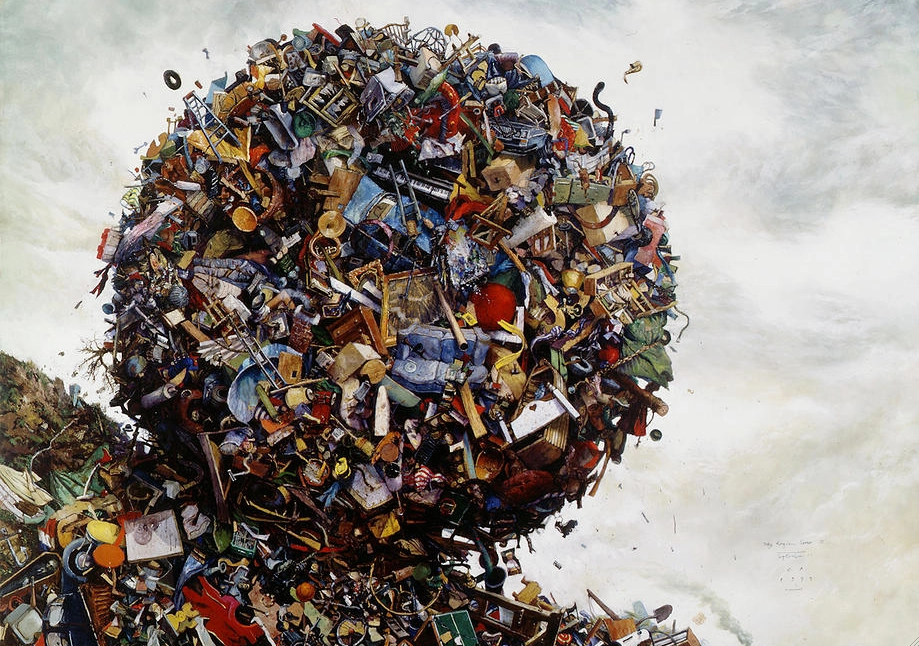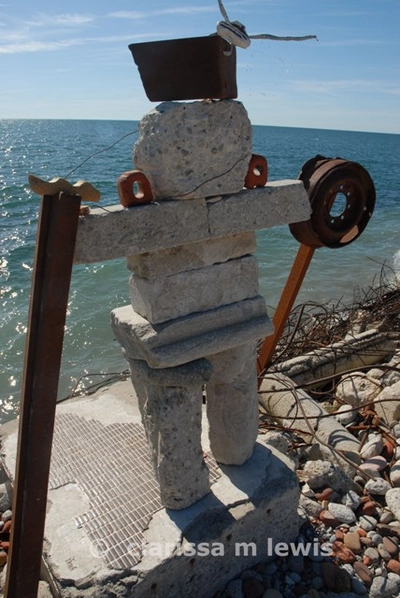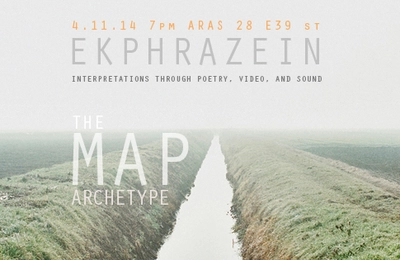ARAS Connections: Image and Archetype - 2014 Issue 2

Sometimes I think rubble is the norm of our lives--in television, film, on the internet, and just about everywhere else. Melinda Haas, the outgoing President of the National ARAS board, has written the concise and pithy introduction to the two fine papers on rubble in this edition of ARAS Connections. These papers explore the creative journey of making both art and meaning out of what has been discarded in our world, some of which is quite valuable. Quietly and with great care, Melinda has led ARAS in a similar effort for the past nine years--to explore meaning in the images that fill our world. During that time, Melinda has overseen two huge projects--The Book of Symbols: Reflections on Archetypal Images and ARAS Online-- that have come to fruition, both of which were in danger of being discarded at various times in their creation. The Book of Symbols took more than twelve years to create and it seemed for some time as if this Herculean effort would end up on the rubble heap of unrecognized and discarded cultural efforts because ARAS insisted on going more deeply into image and symbol than our quick hit culture is able to recognize and take in with its voracious but superficial appetites. The Book of Symbols was rescued from that fate by the perseverance of Ami Ronnberg and her staff as well as by the patience of Melinda's leadership and the good fortune of finding a publisher with the vision of Taschen.

Likewise, ARAS Online has flourished under the wise leadership of Melinda who understands that the curation of a relatively small number of images, only 17,000, rather than accumulating the millions that flood other online archives, can be far more valuable because ARAS explores the meaning of symbolic images over time and across cultures.
Melinda has led our efforts to save the value of images from the garbage heap of a culture that consumes images as recklessly as it consumes everything else. My favorite image of the rubble accumulated by a world gone mad with consumption is Chester Arnold's portrayal of the Sisyhpean monster that we have collectively created. Imagine the task of trying to salvage meaning from Arnold's trash heap of modernity gone haywire that is fated to roll back over us again and again.
Introduction to Rubble Papers
We put out the call for papers for the Art and Psyche in the City conference many months before the July 2012 conference date. Among the proposals that were submitted were, curiously, three whose subject was rubble or garbage or the detritus of our contemporary life. It would appear, by this confluence of papers, that at this particular moment in our cultural history we are challenged to make meaning of what we discard and that we discard. Two of the papers are presented here. As a pair, they form a set of opposites, each describing the meaning-making process of art-making. The first is Clarissa Lewis' piece about the "Leslie Street Spit" in Toronto Canada. She takes us on a journey, over time, full of whimsy and playfulness and at moments quite poignant. By contrast Janice Shapiro's paper is also a journey, but into the dark world of the lost and discarded, things and people alike. Both papers bring us powerful examples of the human impulse to create. Each of them gives form to the dialogue between ego and psyche, as outer objects come to express unspoken or unspeakable parts of an inner world.
Melinda Haas
Art and Psyche Working Group
The Leslie Street Spit Project: A five year journey tracking the creative instinct

In this article I will be talking about the interplay between the human psyche and our surroundings as it exists in urban locations. Using the example of 'The Leslie Street Spit' in Toronto Canada, I will take you on a virtual visit to a playground for the creative instinct. By the time we finish, I hope that I will have assisted the 'Leslie Street Spit' in transporting you by metaphor expressed; by mystery and by an infusion of wonder. I like John Berger's notion that it might be possible to find heaven by 'lifting up something small and at hand…as small as a pebble' (Berger, "Steps Toward a Small Theory of the Visible")…or could it perhaps also be a bit of rubble?
This will be a journey to a heaven, a temenos. I will try to bring you as close as possible to experiencing what I do as I fall further and deeper in love with and in awe of 'The Leslie Street Spit'.
I ask you to suspend judgment. We will not consider who is qualified to be called an artist nor will we define what constitutes art. In this context that will be irrelevant. What I will be sharing with you is the witnessing of creative instinct at play. It springs from the infinite depth of the unconscious – mysterious and linked to the divine. In this instinct, human beings are more alike than different.
Read the full text of The Leslie Street Spit Project.
The Shadow Side of the City in the Work of the Soul: Refuse as Resource, Rejects as Raw Material

When the call for papers for this conference reached me, I heard it as the herald’s call to adventure. The numinosity evoked by its very name, "Art and Psyche in the City," immediately quickened my heartbeat, and even the beat of my soul.
Among the multitude of images that appeared in my mind’s eye were those that belong to a difficult yet meaningful time that I spent in the city of Boston over 20 years ago.
Having left my home in Jerusalem to complete my Masters in Art Therapy at Lesley College in Boston, I initially found myself utterly disoriented in the streets, ill at ease in the elegant edifices, unable to connect – in short, totally lost.
We all know, at one time or another, at one level or another, this archetypal place where we are lost -- where we don’t belong, where we are misfits, threatened. As James Hillman aptly pointed out, each of us has inside us the image of our own back ward, where backward aspects of ourselves are put away. It was not the first time I had found myself in this abandoned place, but this time it was extreme.
Read the full text of The Shadow Side of the City in the Work of the Soul.
Ekphrazein: The Map Archetype

EKPRAZEIN is a multi-disciplinary performance series hosted by ARAS.
The second Ekphrazein event was held on April 11th , celebrating the archetype of the Map expressed in various forms as Migration, Labyrinth, and Cosmos We are very grateful to the scholars, poets, artists and musicians who contributed to this wonderful evening:
Aurelie Athan
Robert Whitehead
Harry Einhorn
Mikhail Shraga
Adam Kaplan
Caroline Contillo
Tristan Pollack
Miriam Atkin
Lara Brodsky
Eli Epstein-Deutsch
Here are some of the poems from the event and the images that inspired them.
The Poetry Portal

Dear Poets, Writers, and Members of ARAS’ Online Community,
This edition of the Poetry Portal comes at a most auspicious time - summer is here in all her sun glories. We have chosen a very special image for this edition’s invite to write. The Bird comes from a small carving recently found in Germany. It is believed to be 30,000 years old and maybe the oldest sculpture known. It is only about two inches in size but it carries great significance and symbolism, especially as it gives us a glimpse of early man in a moment of inspiration to create. In its easy movement between heaven and earth, the bird has been seen as a messenger from the other world, calling us, giving flight and hope to our ideals, thoughts, and our essential knowing. Across cultures and ages the bird as symbol embodies the soul.
I also chose the Bird to honor the work and life of poet, writer and civil rights advocate Maya Angelou who died last month at age 86. In many ways, because of her life and work, we can say too, the world is no longer the same. In 1997 I had the pleasure to hear Maya Angelou. She quoted her own mentors and teachers, and in that hour of time all of what I had ever read, from her poems to her first memoir, I Know Why the Caged Bird Sings, came to me, sang to me with new messages that only the Bird can deliver. Maya was the essence of birdsong, messenger, soul-soother and sojourner. She helped me believe in myself no matter the challenge. As one of her most noted poems reads:
…
I rise
Into a daybreak that’s wondrously clear
I rise
As always, we would like to thank all those who contributed to the last Invite to Write. Here are some of the poems that were submitted.
Contents
Become a Member of ARAS!
Become a member of ARAS Online and you'll receive free, unlimited use of the entire archive of 17,000 images and 20,000 pages of commentary any time you wish—at home, in your office, or wherever you take your computer.
The entire contents of three magnificent ARAS books: An Encyclopedia of Archetypal Symbolism, The Body and The Book of Symbols are included in the archive. These books cost $330 when purchased on their own.
You can join ARAS Online instantly and search the archive immediately. If you have questions, please call (212) 697-3480 or email info@aras.org
We Value Your Ideas
As our newsletter grows to cover both the ARAS archive and the broad world of art and psyche, we're eager to have your suggestions and thoughts on how to improve it. Please send your comments to info@aras.org. We look forward to your input and will reply to every message.
Subscribe
If you're not already a subscriber and would like to receive subsequent issues of this newsletter by email at no cost, e-mail us at newsletter@aras.org.
